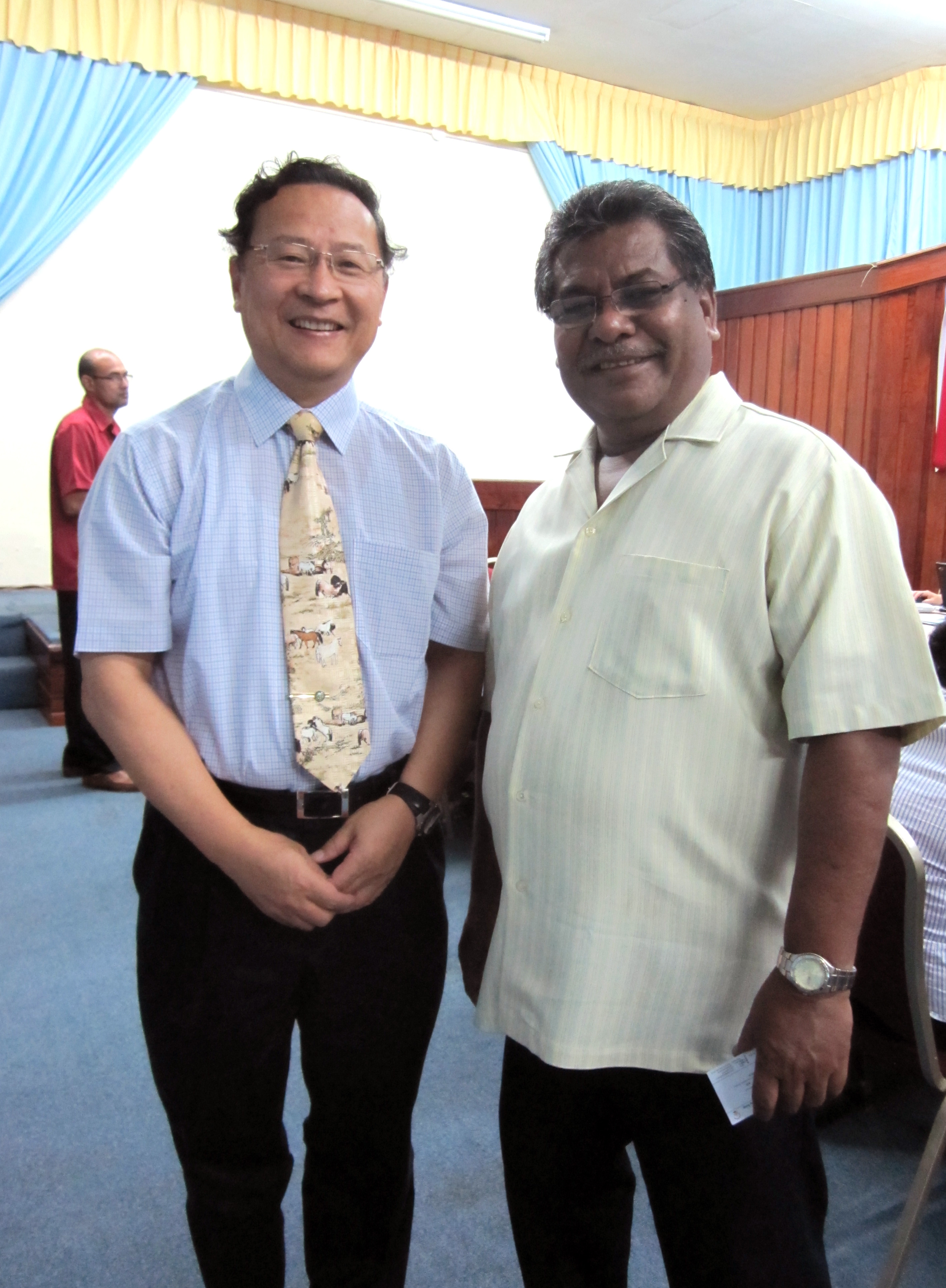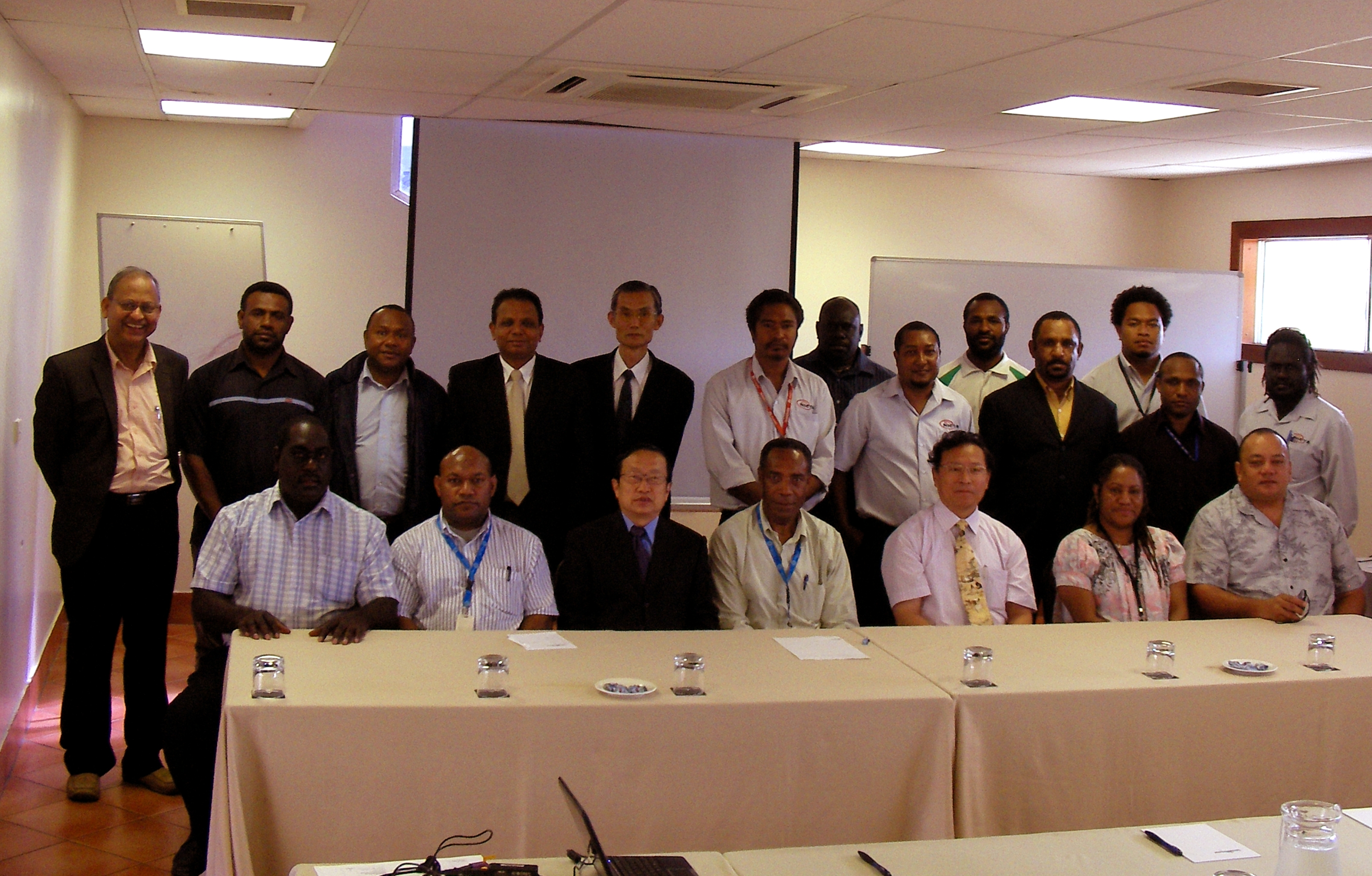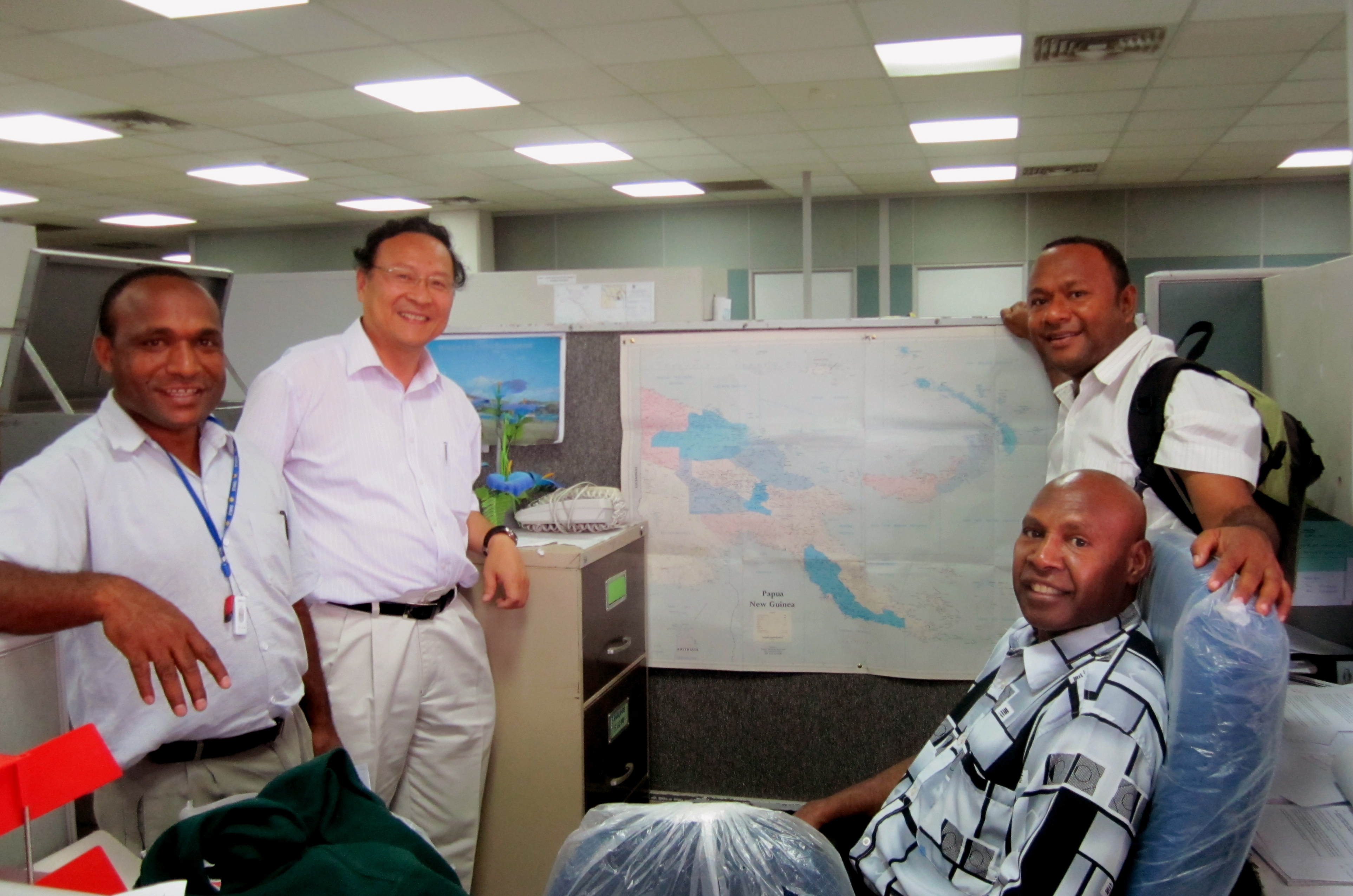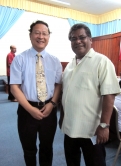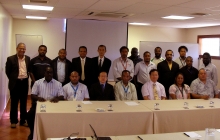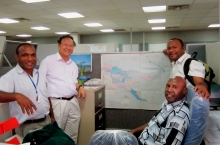CUHK
News Centre
CUHK ISEIS Supports Disaster Reduction Training Programme for Pacific Island Countries and Least Developed Nations
Upon the invitation of The United Nations Economic and Social Commission for Asia and the Pacific (ESCAP), Prof. Lin Hui, director of Institute of Space and Earth Information Science (ISEIS) of The Chinese University of Hong Kong (CUHK), recently visited Palau and Papua New Guinea (PNG) right after the latter was hit by an earthquake, to offer training to government officers on remote sensing and GIS technologies for disaster damage reduction. Officers of the two countries highly appreciated the timely support from UN ESCAP and CUHK. Vice President Kerai Mariur of Repulic Palau received Professor Lin and UN officers who conducted the training programme.
In face of global climate change, Pacific Island Countries and some other least developed countries urgently need satellite remote sensing and GIS technologies to monitor typhoons, storm rain, landslides, sea level rising, volcano, earthquakes, storm surges and tsunamis. ESCAP is now actively managing related resources from member countries and regions to support these countries, including training personnel to use advanced satellite remote sensing and GIS technologies, providing hardware and software of related information systems for disaster reduction, and building up national disaster reduction infrastructure to enhance their capacity of early disaster warning.
Professor Lin said, ‘We can help reduce the pressure of emergency responses to disasters on international society by enhancing the capacity of all nations in disaster reduction. As a citizen of the global village, CUHK is obligated to shoulder the responsibility to let the younger generation understand the significance of international cooperation.’ During his visit, Professor Lin met with PNG officers who are in charge of land planning to discuss the national agenda on land planning and the importance of satellite remote sensing. PNG has a bigger territory than Japan but its population is less than 10% of the latter. People there are living sparsely across the country with 600 different dialects. Various disasters such as earthquakes and volcanic eruptions are frequent. Fast image-based geographic information acquisition can help the country get the latest disaster information and timely emergency support.
Dr. Xuan Zengpei, Director, ICT and Disaster Risk Reduction Division of ESCAP, and coordinator of this training programme, hoped that the Hong Kong government and CUHK will support further by organizing international training programmes on satellite remote sensing and GIS for disaster and risk reduction in ISEIS to train related professionals for the southern Pacific Island Countries and other least developed countries.
Founded in 1947, ESCAP is the largest regional development arm of the United Nations for the Asia-Pacific region, which consists of 53 national members including mainland China, USA, Russia, Japan, India, Australia, Singapore, South Korea, Thailand, Vietnam, Pakistan and nine associate members including Hong Kong and Macao SAR governments. The Satellite Remote Sensing, GIS and Satellite Navigation Working Group under ESCAP has its Hong Kong governmental contact point at Hong Kong Observatory while its non-governmental contact point is ISEIS of CUHK. ISEIS is the Hong Kong base of China National Remote Sensing Center. With the long term support from Ministry of Science and Technology of China and Innovation Technology Commission of HKSAR Government, ISEIS has built up the Hong Kong Satellite Receiving Station which is a part of the national earth observation network of China. ISEIS has developed a unique research and teaching environment that has attracted outstanding researchers and students in the field of remote sensing and GIS. With the generous donations from Hong Kong Yuen Yuen Institute and other private funding sources, ISEIS also provided training to students from western China, nurturing 12 master graduates in four phases. These students have returned to Tibet, Xinjiang, Inner Mongolia and Gansu and some of them are playing an active role in developing remote sensing technologies, contributing to environmental protection and disaster monitoring in their homeland.
Vice President Kerai Mariur of Republic Palau (right) meets with Prof. Lin Hui in the opening session of the training programme and thanks for the support from Hong Kong.
A group photo of Prof. Lin Hui (third right, front row), UN ESCAP officials and trainees of the training programme.


